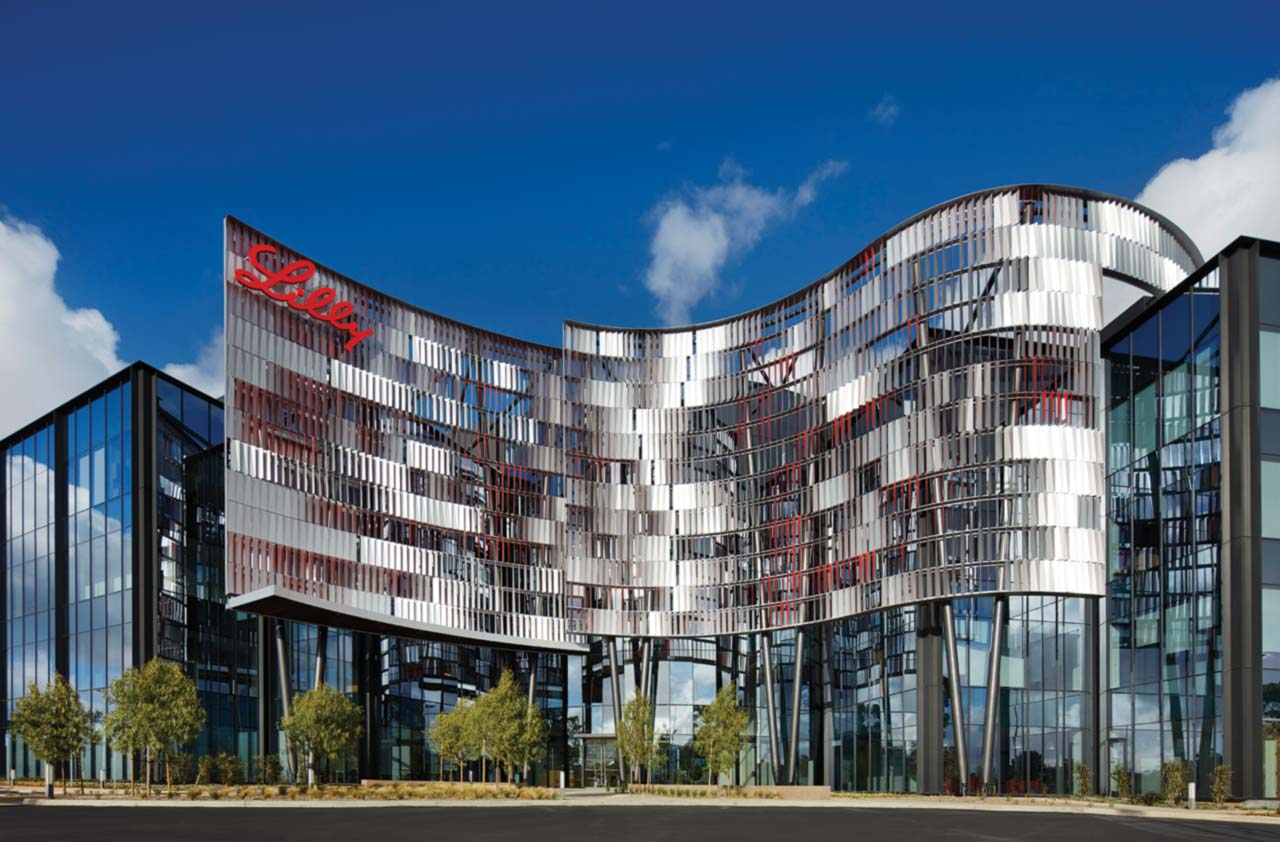5 Great REITs to Buy Now
In a field facing challenges, these five stand out.


Real estate can be a great investment—if you can afford a down payment on a property and deal with the headaches of being a landlord. Sound like more trouble than it’s worth? Consider investing in real estate investment trusts.
Property-owning REITs are large landlords that rent out apartments, offices, malls and other types of real estate. REITs must distribute 90% of their net income, after covering expenses, so they pay out steady dividends. And many REITs hike their payouts as they raise rents, upgrade buildings, and buy or develop more properties.
For income investors, REITs can be better bets than high-quality bonds or common stocks. The average property REIT recently yielded 4.1%, well above the 2.4% yield of a 10-year Treasury bond and the 2% payout rate of Standard & Poor’s 500-stock index.

Sign up for Kiplinger’s Free E-Newsletters
Profit and prosper with the best of expert advice on investing, taxes, retirement, personal finance and more - straight to your e-mail.
Profit and prosper with the best of expert advice - straight to your e-mail.
Granted, most REITs aren’t likely to be superstars in today’s market. Interest rates may increase over the next year, raising financing costs for property owners. And higher yields would increase the appeal of long-term bonds relative to REITs, which would put pressure on REIT shares. Plus, some REITs are seeing rental demand drop—notably, firms that own malls. Competition from online retailers is hurting big tenants such as department stores, squeezing REITs’ income.
But some REITs are likely to produce strong returns, even if interest rates rise modestly. We found a few that are riding powerful high-tech trends. They own data centers, for example, or warehouse-distribution hubs, which are thriving with the growth of online retail. These stocks yield less than the average REIT, but they should more than make up the difference with share-price gains. For investors who want higher yields, we found a REIT that should prosper by sticking with high-quality malls, and a small firm with a growing stable of apartment buildings that yields 7.1%.
Note that most REIT distributions are treated as ordinary income for tax purposes, which can sting if you’re in a high tax bracket. Profit estimates below are based on funds from operations (FFO), a common REIT measure that represents net income plus depreciation expenses. All prices and other data are through October 31.
Alexandria Real Estate Equities (symbol ARE, price $124, dividend yield 2.8%)
Alexandria specializes in properties for the life-sciences industry. Companies such as biotech drugmaker Amgen (AMGN) and gene-sequencing firm Illumina (ILMN) lease space from Alexandria, as do medical institutions such as the Dana-Farber Cancer Institute. These are tenants that pay their rent on time and cover most of the properties’ operating costs, such as insurance and taxes. They also rarely vacate, partly because it would be too costly to rebuild their sophisticated facilities elsewhere.
Alexandria is now developing an agricultural technology campus in North Carolina’s Research Triangle Park. And the REIT is luring new tenants, such as Facebook (FB), to other properties. The REIT’s specialized market bodes well for long-term growth, says Ernesto Ramos, manager of BMO Growth Fund, which owns shares of Alexandria. Analysts expect its FFO to climb by 8.8% in 2018 from 2017 levels.
Digital Realty Trust (DLR, $118, 3.1%)
Digital is one of the largest owners of data centers. The huge, climate-controlled buildings house computers and networking equipment for big companies. Firms such as Amazon.com (AMZN) and Microsoft (MSFT) seek prime spots in such digital town squares to support their services. And they want proximity to each other to exchange data as fast as possible. “Data centers can charge tenants to take a 2-foot cord and connect one computer to another,” says Steve Buller, manager of Fidelity Real Estate Investment Portfolio, which owns shares of Digital.
The REIT’s revenues are rising as the firm opens campuses in cities such as Chicago and London. Digital recently merged with rival Dupont Fabros, extend-ing its business to more locations. With FFO expected to rise by 8.6% in 2018, so should Digital’s payout.
GGP (GGP, $19, 4.5%)
Investing in GGP, a large retail property owner, takes some faith that online sales won’t kill the mall business. Those fears have weighed the stock down by 17.4% over the past year. But the REIT now looks like a bargain, and its business trends are perking up, says Matthew Werner, comanager of West Loop Realty Fund, which owns the stock.
More than 80% of the firm’s assets are high-quality malls with strong occupancy rates, he says. GGP’s cash flows (after capital expenses) should accelerate over the next two years, enabling the company to hike its payout at an 8% annualized rate. GGP could also get a buyout offer from Brookfield Asset Management (BAM), which owns about one-third of GGP’s shares. The potential for a deal helps “put a floor” under the stock, Werner says, preventing it from drifting much lower.
Independence Realty Trust (IRT, $10, 7.1%)
Independence, a housing REIT that went public in 2013, owns 47 garden-style apartment properties in the Midwest and Southeast, charging rents that average just $978 per unit. Tight supply and strong demand for such affordable housing has helped Independence maintain a robust 94% occupancy rate. The REIT upgrades apartments that it buys, installing new floors and amenities such as washer-dryers, to support higher property values and rents.
Like any small stock, the REIT, with a market value of just $718 million, is likely to be more volatile than larger, more stable firms. And just a couple of bad real estate deals could have an outsize effect on its bottom line. But the firm’s finances are improving, and its rental business looks healthy, says Werner, whose fund owns shares of the REIT. Although he doesn’t expect the REIT to raise its dividend in the near term, he believes the stock could hit $11 over the next two years, producing total returns, including dividends, of about 18.5% over that time period.
Prologis (PLD, $65, 2.7%)
With online sales expanding, warehouse distribution centers have become critical, high-tech junctions for shipments and returns. As the world’s leading owner and developer of such real estate, Prologis looks well situated to profit.
Nearly half the firm’s properties are in densely populated coastal areas, such as Los Angeles, New York and New Jersey—prime spots to handle global shipments. Even while building more logistics-focused centers, the firm has maintained a healthy 97% occupancy rate. Prologis should also benefit as traditional retailers sell more goods online for pickup and return in stores, says Fidelity’s Buller, whose fund owns shares of Prologis.
Prologis expects to lift FFO at about an 8% annualized rate over the next three years, supporting estimated total returns of about 11% a year. Although the stock has already gained a superb 27% over the past year, including dividends, it should continue to be a winner.
Other ways to invest
Investors who don’t want to buy individual stocks can get exposure to REITs through an exchange-traded fund or mutual fund.
Among ETFs, our top pick is Schwab US REIT (symbol SCHH, $41, 3.7%). The ETF tracks an index of the 102 largest U.S. REITs, including residential, office and retail-property owners. We like the fund’s broad diversity and its rock-bottom expense ratio. The ETF charges just 0.07%, or 70 cents per year for every $1,000 invested.
Going abroad helps give the iShares Global REIT ETF (REET, $25, 4%) a bump in yield over most pure U.S. real estate funds. The ETF holds 65% of its assets in U.S. REITs, with the rest in foreign stocks, such as Hong Kong–based Link Real Estate Investment Trust. The drawback: Investors face some foreign-market and currency risks with this fund.
Among mutual funds, Fidelity Real Estate Investment Portfolio (FRESX, 2.6%) has racked up a strong record, beating the 10-year category average for real estate funds and pulling ahead of its peer group in eight of the past 10 years. T. Rowe Price Real Estate (TRREX) has been a solid performer, too, although not as strong in recent years. Both funds charge expense ratios of about 0.75%, below the 1.16% average for real estate stock mutual funds. T. Rowe doesn’t report a standardized 30-day yield (used for the above recommendations), but the fund paid out at a 2.5% annualized rate over the past 12 months, based on its recent share price.
Get Kiplinger Today newsletter — free
Profit and prosper with the best of Kiplinger's advice on investing, taxes, retirement, personal finance and much more. Delivered daily. Enter your email in the box and click Sign Me Up.

-
 Is the Economy at Risk of a Recession Because of Tariffs? What the Experts Are Saying
Is the Economy at Risk of a Recession Because of Tariffs? What the Experts Are SayingWith the stock markets up and down and tariffs on and off everyone including retirees may wonder what it means for the economy. Here's what the experts think.
By Donna Fuscaldo Published
-
 Stock Market Today: Tariff Pause Triggers 3,000-Point Dow Rally
Stock Market Today: Tariff Pause Triggers 3,000-Point Dow RallyThe bond market is sending concerning signals as the Trump administration executes its rapid reordering of global trade relationships.
By David Dittman Published
-
 How Inflation, Deflation and Other 'Flations' Impact Your Stock Portfolio
How Inflation, Deflation and Other 'Flations' Impact Your Stock PortfolioThere are five different types of "flations" that not only impact the economy, but also your investment returns. Here's how to adjust your portfolio for each one.
By Kim Clark Published
-
 Kiplinger's Economic Calendar for This Week (April 7-April 11)
Kiplinger's Economic Calendar for This Week (April 7-April 11)This week's economic calendar features a steady stream of jobs data and an end-of-week speech from Fed Chair Powell.
By Karee Venema Last updated
-
 Why I Still Won't Buy Gold: Glassman
Why I Still Won't Buy Gold: GlassmanOne reason I won't buy gold is because while stocks rise briskly over time – not every month or year, but certainly every decade – gold does not.
By James K. Glassman Published
-
 Should You Use a 25x4 Portfolio Allocation?
Should You Use a 25x4 Portfolio Allocation?The 25x4 portfolio is supposed to be the new 60/40. Should you bite?
By Nellie S. Huang Published
-
 Retirement Income Funds to Keep Cash Flowing In Your Golden Years
Retirement Income Funds to Keep Cash Flowing In Your Golden YearsRetirement income funds are aimed to engineer a steady payout of cash for retirees. Here are a few we like.
By Nellie S. Huang Last updated
-
 10 2024 Stock Picks From An Investing Expert
10 2024 Stock Picks From An Investing ExpertThese 2024 stock picks have the potential to beat the market over the next 12 months.
By James K. Glassman Published
-
 How to Find Foreclosed Homes: Best Foreclosure Listings Sites
How to Find Foreclosed Homes: Best Foreclosure Listings SitesMaking Your Money Last Find foreclosed homes for sale on these foreclosure listing websites. Search for properties on these free, paid or government sites.
By Bob Niedt Last updated
-
 Luxury Home Prices Rise as the Rich Dodge High Mortgage Rates
Luxury Home Prices Rise as the Rich Dodge High Mortgage RatesLuxury home prices rose 9% to the highest third-quarter level on record, Redfin reports, growing nearly three times faster than non-luxury prices.
By Kathryn Pomroy Published